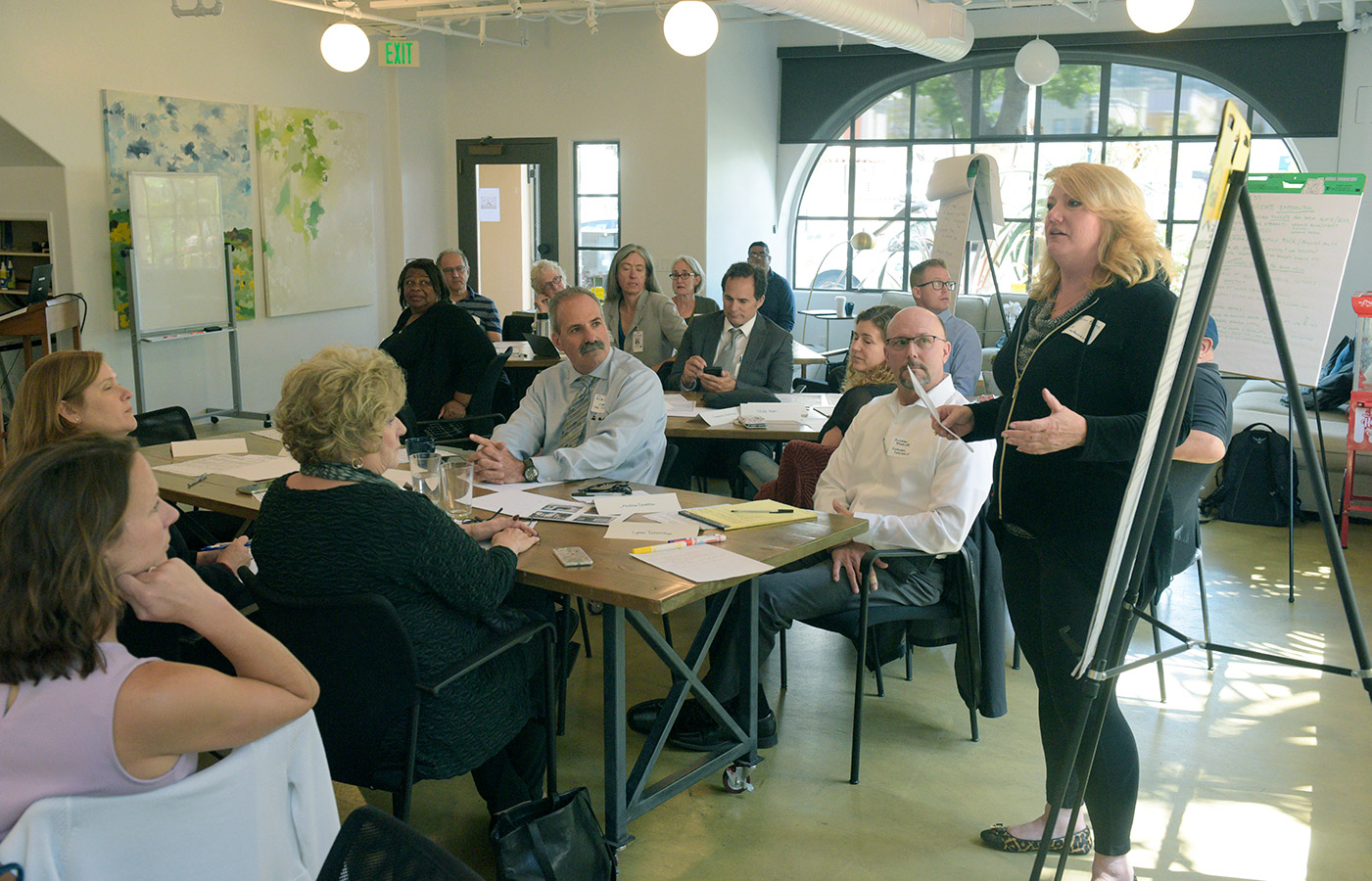City on Vision Quest for State Street Revival
Leaders Also Mull Ways to Protect Economy from Next Disaster

Armed with colored markers, big notepads, and the kind of breezy energy that comes with a freewheeling brainstorm session, a few dozen city leaders spent Tuesday morning spitballing ideas on how to gird Santa Barbara’s economy against the next natural disaster and how to spark new life into a comatose State Street corridor.
Hosted by the Impact Hub in its satellite Chapala Street space, the event was organized by Women’s Economic Ventures and City Hall staff. It featured a who’s who of government executives and business operators — from the city’s chief building official to the owner of Jeannine’s bakery to an aide from the governor’s office — and was emceed by a peppy Brooklyn rapper named Dyalekt. By the end, Dyalekt heard dozens of proposals — some new, others voiced many times before — and had the whole room beatboxing.
During the first breakout session on the next disaster, or “disruption,” as organizers called it, groups suggested drafting a clear transit plan that outlined detours and what modes of transportation were operating where. An online clearinghouse of information could be created, they said, that listed stores and restaurants that were still open, as well as work opportunities. An ombudsman, or “recovery czar,” would facilitate communication and cooperation across agencies, and a temporary reprieve from certain rules and regulations would help struggling business get back on their feet. Announce volunteer opportunities, the groups advised, offer insurance support, and be quick about organizing a shop-local campaign.
On the topic of State Street — currently afflicted with 34 vacancies — the groups suggested implementing a consolidated permitting program, creating an economic development director position at City Hall (something many other cities have but Santa Barbara lacks), and encouraging an organized coalition of businesses to collectively negotiate rent terms with landlords.
Sarah York Rubin, director of the county’s Office of Arts & Culture, talked about creating new identities for existing blocks or capitalizing on ones that already exist, like the grouping of live music venues along the 500 block or the entrepreneurial-minded businesses in the 1100 block. Others brought up the concept of creating “anchor experience” venues — such as an arcade or bowling alley — that would cater to young people and their families and draw in other businesses with similar target demographics.

Jason Jaeger of Jaeger Partners, a commercial brokerage and management firm, discussed the presence of people who are homeless, stating would-be shoppers keep clear of State Street out of fear for their personal safety. “We care about the homeless,” he said, but more should be done to “get them away from the business corridor.” To do that, some suggested creating a “safe camp” area for panhandlers that would connect them with services and offer employment opportunities. The public should be educated against giving money, one participant said, and other deterrent programs, such as those that target violent gang crime, could be used as models for addressing the problem.
Sharon Byrne, director of the Coast Village Association, was grouped with the owner of Pascucci, who pays $1,000 a day to rent her restaurant space. Byrne said while she understands the free-market argument for why State Street rents are so astronomically high, she wondered, “Do we need to go derelict” before price and demand even out? Byrne also said she’s heard from renters forced to pay 20-30 percent above market rate to stay on State Street.
The next step for City Hall, explained assistant city manager Nina Johnson after the event, is to compile all the input it has received from similar stakeholder get-togethers and create a strategic action plan. The City Council will need to weigh in on the language and format of that plan, Johnson explained.
According to this year’s UCSB Economic Forecast Project report, released last week, taxable retail sales increased everywhere in the county except in the cities of Santa Barbara and Carpinteria, where they dropped 1.1 and 3.5 percent, respectively.
The latest Hayes Commercial Group quarterly report highlighted two major sales of large retail properties: the purchase of the Macy’s building by the owners of Paseo Nuevo mall for an estimated $12 million and the acquisition of the Saks Off 5th building by an unnamed local investor for $18.5 million.
Hayes predicted the Macy’s space will be turned into “entertainment-oriented retail and dining to complement the mall’s new image as ‘destination retail.’” A separate source stated housing will be developed in the Saks Off 5th building. Hayes also said in its report: “The Marshalls building at 900 State St and the Urban Outfitters building at 624 State St are prominent downtown retail properties with national tenants that are trying to attract buyers.”



